It's an Extravaganza of Questions and Answers on the Naked Scientists this week as we take on your questions, including whether dogs can sniff out a seizure, what is fire made of, and how do glow in the dark objects work? Also, we hear what an artificial tongue can tell us about speech production and the way to build superior voice recognition software, we rev up a system that can harness the waste heat in car exhaust to boost efficiency, find out how to flavour breast milk and hear why dolphins sing lullabies. Plus, in Kitchen Science, Ben and Dave go for a drive with a helium filled balloon to uncover the basis of inertia!
In this episode

Fulsome flavours on offer at the "breastaurant"
Scientists have shown that when mum eats something tasty, so does a breast-feeding baby.
 Although scientists had previously shown associations between maternal diet choices and subsequent food preferences amongst young children, it wasn't known whether this was because the strong flavours of some foods were actually making their way into breast milk. To find out, Copenhagen University researcher Helene Hausner and her colleagues, who have published the work in the journal Physiology and Behaviour, recruited 18 breast-feeding women. After obtaining baseline milk samples, the volunteers were given capsules containing natural flavour chemicals at doses chosen to mimic the amounts that would be present in a normal diet.
Although scientists had previously shown associations between maternal diet choices and subsequent food preferences amongst young children, it wasn't known whether this was because the strong flavours of some foods were actually making their way into breast milk. To find out, Copenhagen University researcher Helene Hausner and her colleagues, who have published the work in the journal Physiology and Behaviour, recruited 18 breast-feeding women. After obtaining baseline milk samples, the volunteers were given capsules containing natural flavour chemicals at doses chosen to mimic the amounts that would be present in a normal diet.
The researchers tested menthol, d-carvone (the flavour in caraway seeds), 3-methylbutyl acetate (which is in bananas) and trans-anethole (which is the strong flavour in star anise, fennel and liquiorice). The participants swallowed the capsules before lunch and milk samples were collected every two hours for the next 8 hours. The "head space" (the air above the milk) was then analysed chemically to measure how much of each of the flavourants was present at each time point.
The results were very surprising and showed that the caraway and liquorice flavours peaked in the milk within two hours of being swallowed; concentrations of menthol rose more slowly, peaking between four and six hours. By eight hours all three had returned to baseline. The banana flavour was not detected in any of the samples.
Intriguingly there was considerable variability in terms of how much of the flavour chemicals ended up in the milk made by different mothers, with differences of over 80% for some of the flavours. Repeating the experiment also produced 50% differences in the same individual, showing that the transfer of dietary constituents to breast milk is highly variable both between and within individuals.
What this does show, however, is that breast feeding may help to prepare infants to accept new food flavours, and preliminary research carried out the Hausner suggests that breast-fed babies are more receptive to new tastes than their bottle-fed counterparts. But probably the most practical value of the study, however, is that mothers can be reassured that whatever they eat it will be gone from their breast milk within 8 hours. So go on, have that curry!
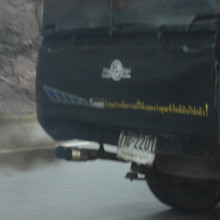
Exhaustive research REVives engine efficiency
US scientists have found a way to get cars going 10% further on their fuel.
 Writing in this week's Science, Ohio State University researchers Joseph Heremans, Vladimir Jovovik and colleagues have developed a thermoelectric compound that can turn the waste heat in the average exhaust into electricity. This can be tapped off and stored in a battery, along similar lines to how hybrid cars work at the moment. The new material is a compound of lead and tellurium with a small amount of thallium added. When heat is applied it generates a voltage.
Writing in this week's Science, Ohio State University researchers Joseph Heremans, Vladimir Jovovik and colleagues have developed a thermoelectric compound that can turn the waste heat in the average exhaust into electricity. This can be tapped off and stored in a battery, along similar lines to how hybrid cars work at the moment. The new material is a compound of lead and tellurium with a small amount of thallium added. When heat is applied it generates a voltage.
"You can think of it like a bucket containing some water," explains Heremans. "If one side of the bucket is made hot and the other side cold, the water evaporates from the hot side and condenses on the cold side. In this material electrons behave in a similar way." The idea would be to place the material in contact with the hot exhaust gases close to where they emerge from the engine, whilst cooling the lower surface of the compound. Electrons could then be collected from the hot surface, passed through an external battery, and then returned to the cold surface, completing the circuit.
For many years scientists have been trying to achieve this effect at an efficient rate and with materials that can be mass produced, but without success. The new material has tackled the problem in an entirely new way. Previously scientists have tried to use carefully crafted nano-structures to control the flow of heat through the compound, since it's the temperature difference across the material that drives the generation of electricity.
But instead the approach taken by Heremans has been to try to capture more electrical energy from the heat that is already flowing through the material. They achieved this by taking the existing lead telluride (PbTe) compounds and adding thallium.
"About one in every 50 atoms in the material is thallium, and this increases the number of electrons that become available at certain energies," says Heremans. The result is a compound that is very easy and relatively inexpensive to mass produce, and could make a significant difference to vehicle efficiency. "Most cars are at best 25% efficient," explains Heremans, "so only a fraction of the energy in the fuel actually ends up in the wheels - a large amount goes straight out of the exhaust pipe. This system enables us, immediately, to improve that efficiency by at least 7%."
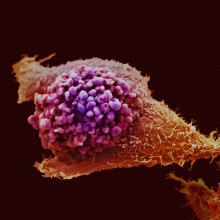
New prostate cancer drug
One of the biggest cancer stories in the news this week has been about abiraterone, a new drug that's currently being tested for prostate cancer. There was a lot of media interest on Wednesday, when researchers released the results of an early-stage clinical trial of the drug in men with aggressive prostate cancer whose cancer had come back after standard hormone treatment. The trial showed that the drug worked in up to 80% of the patients on the trial.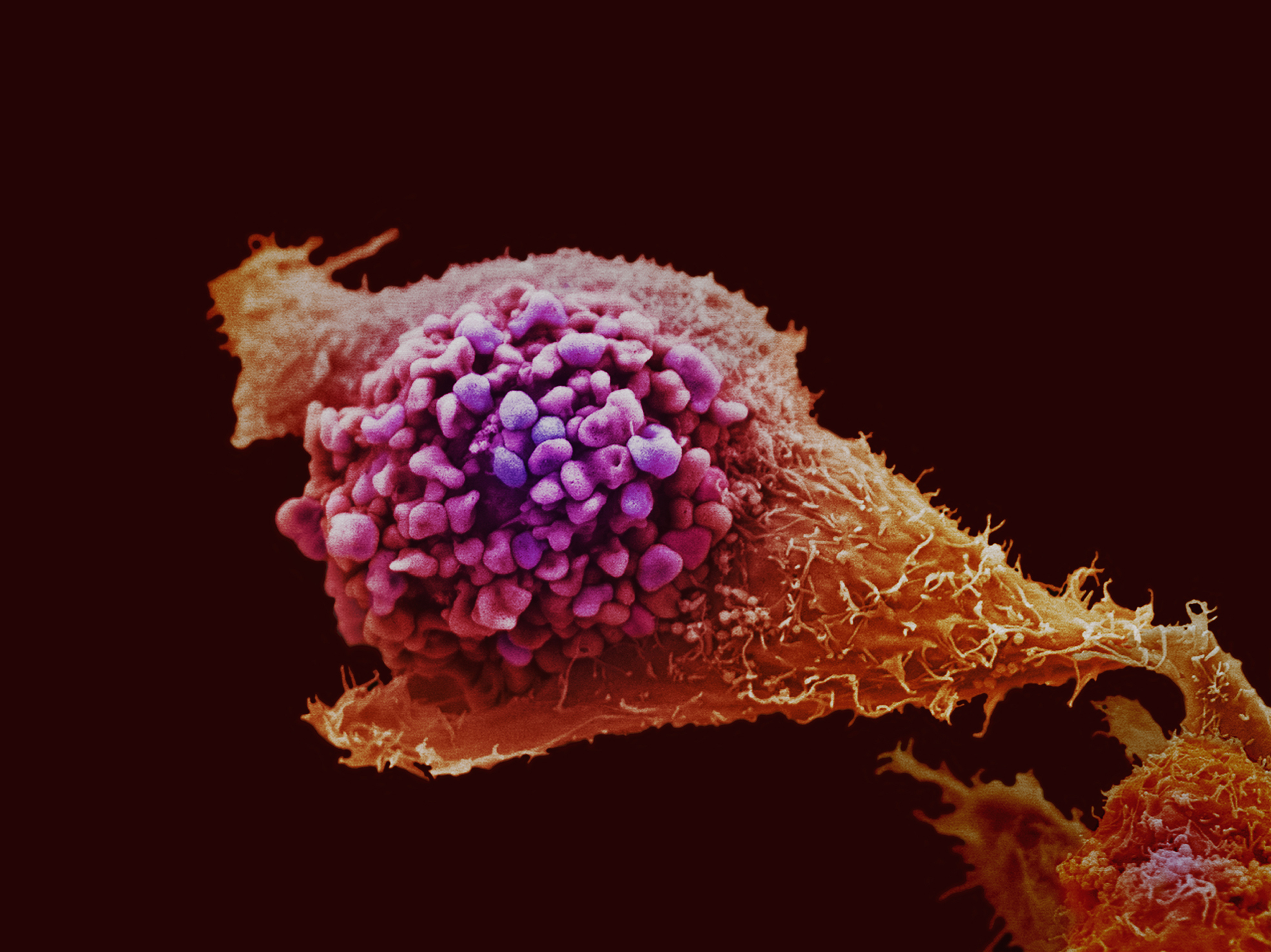
Obviously, this gathered a lot of media interest, with some stories claiming that the drug could save "10,000 lives a year" - the number of men who die from prostate cancer every year in the UK. Although the drug is very interesting, it's really important to realise that this was a very early stage trial and involved only 21 men. That's certainly not enough to warrant its general use in the clinic.
Abiraterone is now being tested in a much larger group of 1,200 prostate cancer patients, as part of an international trial. Only when we get the results of that will we know if it really is a safe and effective treatment. At the moment. It's too early to get over-excited.
However, Cancer Research UK is certainly watching the results with interest, as the charity was involved in the early stages of developing and testing abiraterone, and is also currently funding a small-scale trial to test the drug in women with breast cancer.
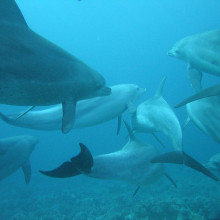
Dolphin lullabies and noisy whales
I'm going to stick with underwater singers, with a couple of quick stories from the world of marine mammals.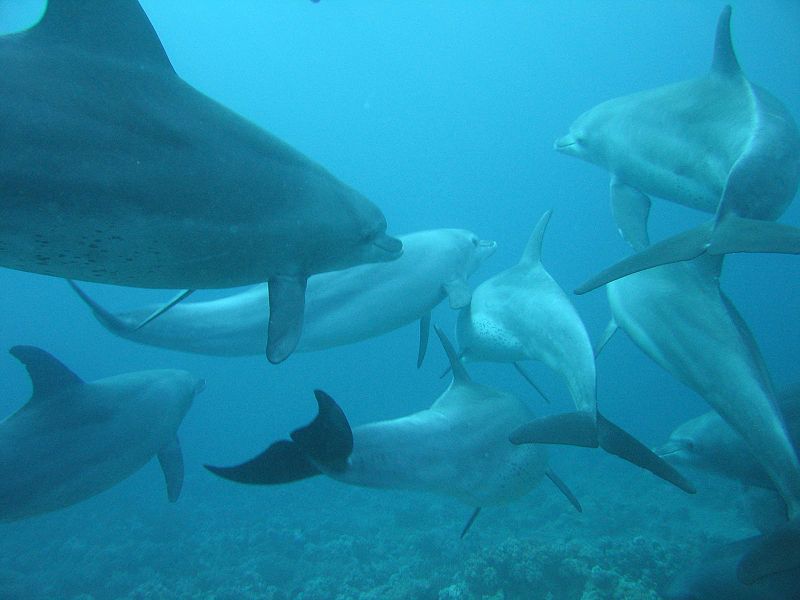
Firstly, we have those playful creatures, the bottlenose dolphins, and news this week that as well as using squeaks and whistles to hunt for food and communicate within the social pods they live in, dolphin mothers may also sing special lullabies to their babies for the first few weeks after they are born.
Researchers from Dallas Zoo in the US think that the captive female bottlenoses are singing to imprint their offspring so they recognise their mothers and don't get lost, or worse, stolen by another females in the pod - something that can happen in the first day or so after birth, but doesn't seem to happen much after that, hinting that once a young dolphin has learned who its mother is, it won't wander off with anyone else.
Then, there is also news of the noise-making talents of another ocean inhabitant, the magnificent humpback whale. It seems that it is not just their alluring songs that are deep and meaningful, but other noises they make, like splashes, bubbles and grunts too, may also hold important information..Researchers from the University of Queensland have been studying various noises made by humpback whales and the corresponding behaviours as they migrate along the Great Barrier Reef and down to the Antarctic each year.
And they found that the whales seem to make particular noises in certain social occasions. So for example, the noise of leaping into the air and splashing back down - known as breaching - seems to happen most often in groups with just one adult, who might be saying to the youngsters "Here I am!"
This study has not only opened up the possibility of more complex whale-to-whale communications, it also highlights the importance of understanding how whales use sound and how all the noise pollution we pump into the oceans might be affecting them.
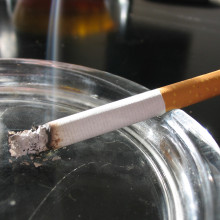
Cigs don't help colds
Snuffles and sneezes are all too common, but if you're a smoker, you're more likely to suffer more from colds and flu than non-smokers. Smokers are more likely than non-smokers to die during flu epidemics. And children who are exposed to second-hand smoke have more severe responses when they get cold viruses.
But until now, it wasn't known exactly why this happens. Some scientists have suggested that cigarette smoke dampens down the immune responses to infection. New research from scientists at Yale School of Medicine in the US has finally answered the question - and found that the opposite is true..
Writing in the Journal of Clinical Investigation, the team showed that the immune systems of mice exposed to cigarette smoke from as little as two cigarettes a day for two weeks overreacted when they were also exposed to a mimic of the flu virus. The mice's immune systems did manage to get rid of the virus normally, but the exaggerated inflammation caused increased levels of tissue damage.
These findings suggest that smokers have problems not because they can't fight off the virus; but because they overreact to it. The lead author on the study, Professor Jack Elias, described it as" using the equivalent of a sledge hammer, rather than a fly swatter, to get rid of a fly."
The team also found that mice with viral infections that had been exposed to cigarette smoke developed emphysema faster, and had scarring in their airways.
Although the best way to avoid these problems is to quit smoking - or not to start in the first place, the team also uncovered the molecules that are involved in the exaggerated immune response in smokers. They hope that some of these might turn out to be good targets for future drugs to treat lung problems such as chronic obstructive pulmonary disorder, or to protect the lungs of smokers from damage.

17:10 - Artificial tongue could improve speech recognition
Artificial tongue could improve speech recognition
with Roger Moore, University of Sheffield
Chris - Improved voice recognition software usually just means a bigger library of sounds to compare your voice against. Scientists at the University of Sheffield are trying to take a different approach to tackling the problem. They've done it by building an artificial tongue and jaw which replicates the movements we make during speech so we can understand a bit more about how speech gets made. To find a bit more we've invited Professor Roger Moore from the University of Sheffield to join us. Hello Roger.
Roger - Hello Chris. Hi, how are you?
Chris - Thank you for joining us on the Naked Scientists. Very well, thank you. Tell us a bit about your study.
Roger - This is actually the research of one of my PhD students, called Robin Hofe. He's essentially put together an animatronic tongue and vocal tract which we call AnTon. It's just beginning to move right now. It's at a very early stage of development. What we're going to be doing with this is studying the speech production mechanism in animatronic form. We'll be able to access data about how speech is produced which is very difficult to get directly from the human system.
Chris - Describe the system a bit for us. What does this tongue look like?
Roger - It actually does look like a tongue you'll be relieved to hear. It's made form a silicone gel with a latex cover. It's been moulded on a medical model. It's embedded in a plastic skull. The skull is also derived from a real skull. We're, right now, filling in the remainder of the vocal tract in order to complete the cavity which will surround the tongue. The most important part of all is that it has to move. We are connecting motors through filaments in the tongue itself to pull the equivalent of the different muscle groups.
Chris - You can actually accurately model the muscles that are natively in the tongue in order to faithfully reproduce the movements a tongue would make when saying different words?
Roger - This is the idea, yes. We're trying to be as anatomically correct as we possibly can because this is important to the research. One of the key things that we need to find out which is very difficult to do in any other way is to measure the energy that is used to move the tongue into different positions.
Chris - How will you do that with this model?
Roger - It turns out that because it's a physical model all we have to do is measure the energy being used by each of the different motors which is pulling on the respective muscle groups. We will therefore have a very easy way of assessing the different energy uses across the whole of the model.
Chris - How do you know which movements to make the tongue make in order to say different things?
Roger - Initially we're using some MRI scans from our colleagues in Grenoble. We're doing that to establish static positions that we will set up as targets.
Chris - So in other words, what people do with their tongue when they're saying something.
Roger - That's what we have to work with: static sounds, simple vowel sounds. Then we'll move on to dynamic sounds as the complexity of the model progresses. It would be possible to use machine learning techniques to allow the device (because it's all controlled by computer, of course) to learn the relationship between the sound output and the control structures in order to then create the sound that it wants by moving the tongue into the appropriate positions, using auditory feedback on the sound that's produced.
Chris - Will it actually speak to us? Is it possible to make it speak rather than just make movements?
Roger - Eventually it will speak. Right now it's moving but it doesn't actually make a sound at all at the moment. It will be vocalising, we estimate in a couple of months, with the rest of the vocal tract. It would be possible to control it with a whole range of sequence of movements which would correspond to it saying something.
Chris - The ultimate end point of doing this is exactly what?
Roger - As I say, we really need to understand something about the energetic of speed. This is implicated in a lot of the so-called random variation that a lot of our automatic speech recognition devices experience right now. Although speech is highly variable it's not random at all. People are compensating typically for all kinds of situations that they find themselves in and they change their voices. For example, the way that I'm speaking to you right now is very different to the way I would speak to my family. We all know that if you're in the pub you're virtually shouting at your friends in order to be heard above the noise level. Those kinds of changes in the voice are well-known but not well-modelled. That's what we're trying to get a handle on.
Chris - Thank you, Roger. If people want to find out a bit more about your work where should they look?
Roger - Go to the Department of Computer Science website at Sheffield University. They will find myself and Robin Hofe. Robin, in fact, has set up a site which has some videos. There's a bit of an article in New Scientist this week which also points to that.
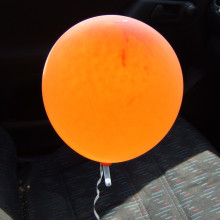
Mobile Party! - Helium Balloons in Cars
If I have B+ blood and so does my wife how can our son have O+ blood?
Kat - Well, you'll be asking the milkman what sort of blood group they have! No, this is all very simply explained. Blood group is determined by a set of genes. You get one gene each from your mum and one from your dad. Blood group's determined by basically two different genes called A or B. You have certain versions of these and you can also get a version called O. These genes make proteins on the surface of your blood cells so if you have a gene that is A you make A proteins and they on the surface of your blood cells. If you have a gene for B that makes B proteins that go on the surface of your blood cells. If you have O then you don't make any proteins. Going back to what I said about you having one gene from your mum, one from gene from your dad - if you had one B gene and one O gene your blood group would be B because you've still got a gene that's making B proteins. Your blood cells are B. If you then were with someone else who had one B and one O and you had a baby with them your babies could either have BB genes, their blood group would definitely be B; they could be BO because they've one gene from you and maybe an O gene from mum or dad or they could have the two Os, in which case they would be blood group O. It's perfectly possible to have two B parents having an O child from which you can actually infer both of you must be BO.
Chris - That's because group O is recessive. Kat - Exactly, group O is recessive because you have no proteins on the surface of your blood cells from this group. If you have even just one A or B gene that determines your blood type.

Why are yawns so contagious?
Helen - I think you share a trait between about 40 and 60% of people who find yawns very catchable. The answer is we don't know. We don't really know why it is that yawns are so contagious. I think we're not even quite sure why we yawn anyway! There's lots of ideas as to what that is. We're not alone in our catching of yawns. Chimpanzees do it as well and it's an unconscious process so we really don't know what it is. It could be early on in evolution we needed to communicate how sleepy we were because it was important for groups of people to go to sleep at the same time and wake up at the same time. Things like that. By yawning it created a synchronised behaviour and that sort of thing. That could be a reason why. People have actually looked at what's going on inside our brains when we are catching yawns by putting people inside of magnetic resonance machines and looking at patterns of electricity inside your brain when you're watching other people yawn. It hasn't really opened up much of an answer to what's going on. We get a lowering in activity of a particular part of the brain called the peri-amygdala region. This is deactivated very strongly if you have a person who really wants to yawn. The desire to yawn varies between different people. We're really left with a bit of a question mark on that one.
Although I did rather love some experiments I found a report of which is at a zoo - They wanted to see if this was cross-species so they went round with people looking at animals yawning to see if it made us yawn. And seeing also if we could make animals yawn by yawning at them. Unfortunately the answer is no. Someone claimed they caught a yawn from a lion but I don't know if that really counts!
Chris - I feel a little bit like yawning with my pets. I have a pet dog and when that yawned I would feel the inclination.
Helen - It's possible. It's a very peculiar thing because it's not about an open mouth. If you cover up a yawn it's still contagious. It seems people are more self-aware and empathetic. It's something to do with imagining how that other person you're looking at is feeling. We begin yawning in the womb. We don't know enough about it and why it happens but it's a very good question. Keep working on it until we find out. Chris - There's a researcher in New York called Gordon Gallup who did some work on yawns. He showed students videos of people yawning and looked at who yawned in sympathy. He then did two things. He asked the students to breathe through their noses or to breathe with their mouths open or hold a cold compress on their forehead. Both these strategies, when you hold a cold compress or breathe through the mouth you can affect yawning. If you breathe through the mouth you yawn more; if you hold a cold compress on your head you yawn less.
His theory is that yawning cools the brain in some way. It's to do with alertness. If you have an infectious yawning behaviour, if you have a group of people who are all sitting round a campfire at night and there's a danger some predator might come along - if one person starts yawning it means one person's getting a little on the tired side. By cooling the brain and increasing alertness - when you have sleep deprivation brain temperature rises - this means if everyone catches the yawn everyone is made more alert at once. This keeps everyone looking for any danger. This is his theory.
What is the composition of fire?
Chris - Fire looks like a solid thing but it's not. It's actually just vapour. When you heat something up to a high temperature it shoves out chemicals which are volatile and flammable. They mix with oxygen which is coming from the air around them. They combust so they react with the oxygen and they burn releasing heat. They also produce some degradation products or burning products from combustion. When you make that it glows. It's incandescent and it gives out light at different wavelengths and different chemicals make different coloured lights. That's why flames have different colours. Sodium's very common and that makes flames an orange colour. If you have incomplete combustion. If you have some sooty particles in the smoke or the vapour they'll glow orange as well. This is why you then see this orange pattern.
Why do glow-in-the-dark objects glow in the dark?
Chris - This is really clever but it goes back 100 years actually. People discovered a paint in 1905 called zinc sulphide. They found that when you shone light on this or something radioactive, radium, it could behave as what's called a phosphor. In chemicals like that, what happens with them is that when you put some energy in the form of light the light kicks some of the electrons up to higher energy levels than they would have normally. Immediately you would expect them to fall back down again but they don't. In some cases these electrons stay at this slightly higher energy state for a variable amount of time and then they fall back to their normal energy level. When they do so they give out the energy they soaked up. They give it out in the visible spectrum and in most cases this is a sort of greeny colour. Green is the colour the eye is most sensitive to in the dark. That's the colour combination most often used because you don't have to have such a good effect for it to be visible.
It's possible to make even better chemicals these days. There's one called strontium aluminate which is very, very good at soaking up energy and then very slowly allowing it to ooze out again as visible light. Yamaha, I think, made a motorbike where the fairing had this around the outside edges so it would soak up light during the day and would have a sort of glow-in-the-dark motorbike at night. The idea being that this would make it more visible to other drivers at night. Your enlarged visible presence subtends a much greater angle on someone's retina, so they're much more likely to see you and the motorbike!
How do plants make tannins when attacked by caterpillers?
Helen - I guess first you want to know what tannins are and why do plants have them. It's something called a secondary metabolite which basically means it's something that plants make which isn't absolutely essential for plant life. It's not part of growing or repairing itself or existing. It's something that's going to add a little extra to the way they live their lives. These are basically things that taste bad. They interfere with things that try to eat plants. They do things like they bind proteins that are eaten. Once they get inside of the caterpillar or the cow or whatever it is eating the grass it stops it from being digested. It puts off animals from wanting to eat different types of plants. We (humans) eat tannins. We actually quite like tannins in tea and wine. Some animals quite like the taste of tannins and some adapt ways of being able to deal with them. Essentially this is a kind of plant defence mechanism to try and stop them from being munched. Some plants will produce tannins naturally anyway. Once they've got themselves growing and they're up doing quite well they'll put tannins in parts of their leaves and stems just to generally keep herbivores away. Some plants actually do a rather clever thing which is because these are quite complex chemicals - they're called polyphenols - they take a bit of energy to make so it might be better to only make them when you are being attacked by something. There are mechanisms by which a mechanical effect, whether that's actually something eating you or even just being damaged by wind, will actually trigger a pathway that synthesises tannins. People have shown that even by just breaking off bits of leaf it triggers genes that code for an enzyme that's part of a pathway that generally creates this tannin. The really clever thing is, for which I really think plants are wonderful, if one plant over here is eaten by a caterpillar and it starts producing tannins it produces another substance (a type of pheromone, a volatile hormone) that tells other plants that tells other plants nearby to start producing tannins. It's plants communicating to each other and protecting themselves from creatures that are trying to eat them.
Why do vegetables like swedes cook quicker when they’re chopped up?
Chris - This is all down to surface area. If you chop up your swede into small chunks then it means there's far more contact between the vegetable and the hot water. If you have one very big swede you have a very big volume locked up inside your swede but not much surface area on the outside of the swede for the heat and the water to get into the vegetable matter. If you chop it into small bits the surface area is now very high relative to the volume so it can get heat in much quicker. The downside is that it can get cold much quicker once you put it on your plate. Eat up quickly!
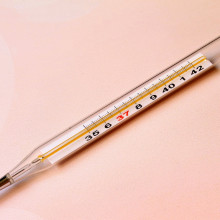
If human body temperature is 37 degrees why do we feel hot when it’s 37 degrees outside?
Kat - There's two reasons for this. 37 degrees is our internal core temperature and the temperature that's on our skin is probably a bit lower. I don't know if this is specific to ladies but often your feet are a bit colder than the rest of your body and my boyfriend always whinges about it. 37 degrees is your core body temperature. Temperatures that are lower than that will still feel hot to us on the outside. The other reason is that it gets harder and harder to cool down your body the hotter it gets, the nearer it gets to 37 degrees. Basically we've evolved systems in our bodies that kick in to cool us down before we get as hot as 37 degrees. It's really to protect us because once you start to approach a temperature of 37 degrees it does get very difficult to keep yourself cool. Sweat doesn't evaporate very easily, so you can't cool yourself down.
Chris - Some people say that the dinosaurs struggled with this because they had something called gigantothermy. Going back to Les in Over's swede once you have a very big body you don't have a big surface area relative to the volume inside you and your metabolic rate is producing all of these chemical reactions that are very exothermic. They give out a lot of energy. Getting rid of that excess heat can be really quite tricky. Some of these dinosaurs struggled to keep themselves cool enough. Although they were effectively cold-blooded because they were reptiles they were effectively warm-blooded. Right in the core of the dinosaur they were so hot from not being able to get all their heat out that they were effectively as warm blooded as you and I. Kat: Getting too hot is really very damaging for your body's reactions once you get over a certain temperature you just can't function properly.
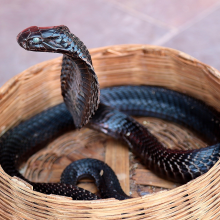
Why is a king cobra not affected by its own venom?
Chris - It is because lots of people say that snakes are in some way immune but the reason is the same reason that you don't die from your own gastric stomach juices. If they get in to the wrong part of your body they will kill you very effectively. When people have pancreatitis which is where the pancreas which is connected to your gut and secretes all the enzymes that break down your lunch. When that gets inflamed and the degrative juices get into your blood stream this can cause quite sever damage to your body and it can cause lung damage and other forms of inflammation. That's very bad.
The snake uses the same strategy that you do. It makes the venom which is a kind of protein. It's a tiny protein which it can make lots of and it has it in a little sac which it stores up in its head. It's connected to the two fangs at the front which are hollow. When the snake bites you this sac squirts a venom out, down the teeth and into your skin. If you look at the venom gland it's lined by very specialised cells that keep the venom there and not in the snake's body. There should be no access between the venom and the snake's body. When I spoke to someone who is a venom expert they said you can also detect antibody to their own venom in some snakes. Just in case some spilled over I think they have this back-up plan which is they have some antivenom built in to mop it up and make sure it doesn't go any further.

What's happening when your stomach rumbles?
Helen - I think my favourite thing for rumbling stomachs is the official word for it.
Chris- Borborygmy. Helen - Borborygmy, that's right! Do you know where it comes from? It's one of those words where you think it must have some clever meaning but apparently the Greeks came up with it. It's just onomatopoeic. It's supposed sound like the sound of your stomach rumbling! It's all about your intestines being a bit of a long tube between your mouth and your bottom, if you like. You have these waves of contraction that are trying to push food down. It's called peristalsis that pushes food through the system into your stomach, through your intestines. It does this all the time and when it's full of food there's really no noise as it gets absorbed by the food. When your stomach's empty or there's a gas bubble trying to make its way through the system it tends to resound a bit and make those kind of funny noises. That's basically what's going on. It's happening all the time but usually you don't hear it.
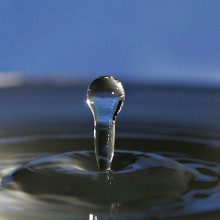
43:38 - Drinking Water that Dinosaurs Drank?
Drinking Water that Dinosaurs Drank?
Professor Ken Carslaw, Atmospheric Science, University of Leeds:
Water is recycled through the water cycle. It evaporates from the oceans, forms clouds, it rains (or snows), the rivers return the water to the ocean.
The longest timescale of water anywhere in the cycle is in the deep ocean (it stays there for several thousand years) and in deep ground water (perhaps 10,000 years).
However, water is very slowly destroyed chemically in photosynthesis (plants converting carbon dioxide and water to sugars and oxygen) and recovered again in respiration (basically the reverse of photosynthesis to make energy and CO2).
You can calculate how much water remains from the dinosaur age from the total amount of water on the planet and the amount of water taken up in photosynthesis per year.
The Earth's plants take up about 12,000 billion kg of water per year (we know that roughly from the CO2 they take up).
The total water on Earth is about 1400 billion billion kg. So within about 100 million years most of the water will have been chemically destroyed. Dinosaurs lived 65 million years ago.
So, SOME of the water we drink is the same water, but more than half is different water.
How do dogs detect human seizures before they occur?
Kat - This is a really interesting one because there's anecdotal evidence that dogs can detect when someone's going to have an epileptic fit. There's also a lot of evidence that actually they don't. In some cases where people are having seizures that aren't genuine epilepsy but are brought on by psychological states, there's some worry that dogs behaving in a certain way might actually cause them to have a seizure when they wouldn't normally.
There are some dogs that are being trained to look after people with epilepsy once they've had a fit. For example, by bringing them a blanket or getting help anmd making an alert. If there is any truth in how dogs may detect fits before they happen maybe they're picking up something in the changes in their owner's behaviour. There's really very little really solid evidence about it. It may be more the partnership. If you have a dog for a long time they get to know what you're like and what you do.
Why do insect bites itch even after the insect has gone away?
Helen - That's a very good question because I get bitten like anything when I go researching in the tropics. It's all about what it leaves behind inside you. They actually pump saliva into you full of anti-coagulating compounds because they don't want your blood to clot while they're there trying to suck it up. They pump you full of anti-coagulants and leeches do the same. This is why you bleed a lot if you've had a leech bite. Your body can have an auto-immune response to that which is why it can swell. You can get used to it if you have a few over a few days. Some people can get used to it like having shots against allergies.
What makes planes leave vapour trails?
Chris - The reason planes leave vapour trails is because they're burning hydrocarbons, chains of carbon atoms linked together with hydrogen round it. When this mixes with oxygen you make water and some carbon dioxide. The vapour trail is the water and because the plane's very high up in the air actually what you're getting is ice. Vapour trails are water vapour that often form ice crystals. They leave those nice miniature clouds behind in the wake of the plane. It is also possible to make much weaker vapour trails form without the plane's engines running. As the plane flies, the wings create a vortex of lower air pressure. This low pressure can lead to lower temperatures, where water vapour condenses forming vapour trails starting at the tips of the wings.










Comments
Add a comment